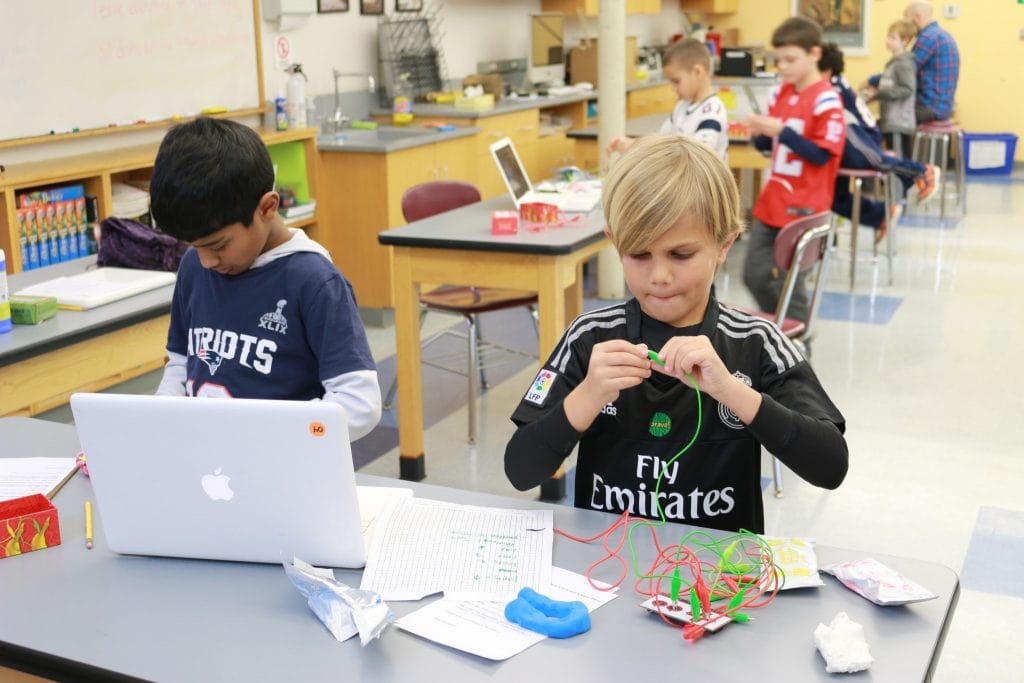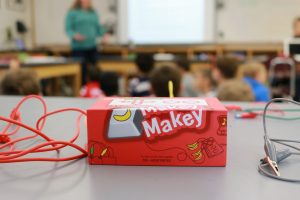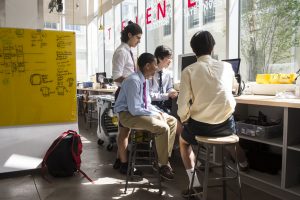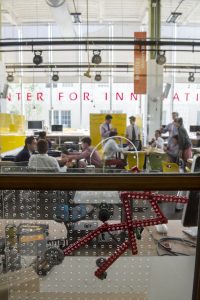 Not long ago, coding seemed like something that was unattainable for the average person. It seemed complex, out of reach, reserved for über smart Silicon Valley archetypes. Today, coding skills are not only becoming more readily accessible to the average student, but they are quickly becoming integral to success in the 21st century. Over the past decade, the introduction of coding classes and the incorporation of projects requiring these skills into curricula has hit elementary and middle schools like a wave. There are myriad benefits to learning the ins and outs of coding, and if you don’t know much about the integration of coding into classes at your child’s school, you should inquire about it today.
Not long ago, coding seemed like something that was unattainable for the average person. It seemed complex, out of reach, reserved for über smart Silicon Valley archetypes. Today, coding skills are not only becoming more readily accessible to the average student, but they are quickly becoming integral to success in the 21st century. Over the past decade, the introduction of coding classes and the incorporation of projects requiring these skills into curricula has hit elementary and middle schools like a wave. There are myriad benefits to learning the ins and outs of coding, and if you don’t know much about the integration of coding into classes at your child’s school, you should inquire about it today.
Here are just a few of the ways students benefit from programming instruction and practice.
Understanding How Technology Works
 Coding allows students to better understand the world in which we live. We are surrounded by technology and, whether we like it or not, interact with it throughout the day. But how many of us actually understand the basic principles that make our technology function? Engaging students in coding challenges and lessons allows them to begin to learn the rules and languages that bind our ubiquitous technologies together. From the simplest understanding of binary (1s and 0s) to the slightly more complex “if/then” logic, coding classes allow students to better understand the way technology works, which will help them be prepared for the complex world they will soon inherit.
Coding allows students to better understand the world in which we live. We are surrounded by technology and, whether we like it or not, interact with it throughout the day. But how many of us actually understand the basic principles that make our technology function? Engaging students in coding challenges and lessons allows them to begin to learn the rules and languages that bind our ubiquitous technologies together. From the simplest understanding of binary (1s and 0s) to the slightly more complex “if/then” logic, coding classes allow students to better understand the way technology works, which will help them be prepared for the complex world they will soon inherit.
‘Debugging’ and Embracing Failure
 Beyond the obvious baseline technical skills, a subtler, but just as impactful, benefit comes from learning and mastering the “debugging” process. Debugging allows a student to return to the source code when an intended outcome isn’t achieved to figure out what went wrong. It requires one to pause, slow down, and employ systems thinking to figure out where the original code went wrong. This trains the brain to use both divergent and convergent thinking, two cognitive approaches that are critical to master as a student gets older. It not only gives children experience with failure, but, more importantly, provides them with the tools and grit to respond positively to failure. Schools have long been places where failure was avoided at all costs, but this is steadily changing thanks, in part, to the thinking that students must become creative problem solvers to thrive in the future. What better way than to develop a healthy relationship with failure?
Beyond the obvious baseline technical skills, a subtler, but just as impactful, benefit comes from learning and mastering the “debugging” process. Debugging allows a student to return to the source code when an intended outcome isn’t achieved to figure out what went wrong. It requires one to pause, slow down, and employ systems thinking to figure out where the original code went wrong. This trains the brain to use both divergent and convergent thinking, two cognitive approaches that are critical to master as a student gets older. It not only gives children experience with failure, but, more importantly, provides them with the tools and grit to respond positively to failure. Schools have long been places where failure was avoided at all costs, but this is steadily changing thanks, in part, to the thinking that students must become creative problem solvers to thrive in the future. What better way than to develop a healthy relationship with failure?
Improving Overall Academic Performance
It might be obvious that a child’s math skills will improve as he or she practices coding. But did you know that writing skills, creativity, and confidence are all proven outputs of the study of coding? According to Tynker: Coding for Kids, a website that enables children to learn computer programming in a fun and imaginative way, programming exposes children to the same process of experimentation employed by Thomas Edison when he developed the first working light bulb. Of his ability to learn from mistakes, he famously said, “I have successfully discovered 1,000 ways to NOT make a light bulb.” When students exercise both spheres of their brains during the coding process, they are able to integrate art with science, which promotes whole-brain thinking and ultimately impacts the way they approach academics in general.
Coding at Fessenden
Fessenden students embrace introductory (and sometimes quite advanced) coding in the Ciongoli Center for Innovation. The coding program begins with some of the School’s youngest boys with the introduction of a tool called “Scratch.” Scratch is a program that allows students to learn coding by dragging and dropping blocks of code into chains, thereby creating commands. Developed by the Lifelong Kindergarten Group at the MIT Media Lab, it “helps young people learn to think creatively, reason systematically, and work collaboratively — essential skills for life in the 21st century.” And it’s free!
 At Fessenden, opportunities for student learning are limitless in a flexible and imaginative environment, and these opportunities are supported schoolwide by passionate faculty and staff. Boys become familiar with “maker concepts” such as programming, robotics, engineering, multimedia, and design. And, boys learn to safely use the tools in the space, preparing them for the more advanced opportunities they’ll have in the Center for Innovation once they reach the Middle and Upper Schools. Whether coding, tinkering, building, or problem-solving, an emphasis on project-based learning allows Middle and Upper School students to develop fundamental and technical skills in STEAM (science, technology, engineering, arts, and math), as well as essential 21st century skills such as creativity, collaboration, and critical thinking.
At Fessenden, opportunities for student learning are limitless in a flexible and imaginative environment, and these opportunities are supported schoolwide by passionate faculty and staff. Boys become familiar with “maker concepts” such as programming, robotics, engineering, multimedia, and design. And, boys learn to safely use the tools in the space, preparing them for the more advanced opportunities they’ll have in the Center for Innovation once they reach the Middle and Upper Schools. Whether coding, tinkering, building, or problem-solving, an emphasis on project-based learning allows Middle and Upper School students to develop fundamental and technical skills in STEAM (science, technology, engineering, arts, and math), as well as essential 21st century skills such as creativity, collaboration, and critical thinking.
You tell us.
Does your child know how to code? What do you think your child could learn from coding beyond the technical skills?




